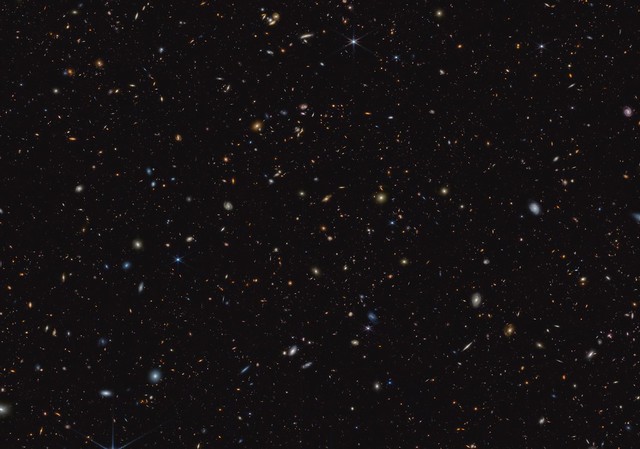James Webb Space Telescope Feed Post
Early Universe Crackled With Bursts of Star Formation, Webb Shows
You're looking at more than 45,000 galaxies. This image was taken as part of the JWST Advanced Deep Extragalactic Survey (JADES) — one of Webb's largest first year science programs. Though data is still coming in, JADES is already revolutionizing what we know about galaxies and star formation in the early universe. Light from distant galaxies is stretched to longer wavelengths and "redder" colors over time due to the expansion of the universe — a phenomenon called redshift. Astronomers measure a galaxy's redshift to learn how far away it is, as well as when it existed in the early universe. Before Webb, there were only a few dozen galaxies observed above a redshift of 8, corresponding to when the universe was younger than 650 million years old. Now Webb’s JADES program has uncovered nearly a thousand of these extremely distant galaxies! Credits: NASA, ESA, CSA, Brant Robertson (UC Santa Cruz), Ben Johnson (CfA), Sandro Tacchella (Cambridge), Marcia Rieke (University of Arizona), Daniel Eisenstein (CfA), with image processing by Alyssa Pagan (STScI) Image description: Thousands of small galaxies are scattered on a black background. Some are noticeably spirals, either face-on or edge-on, while others are blobby ellipticals. Many are too small to discern any structure. A few spirals are bluish, but most of the galaxies appear yellow or red. A handful of stars display eight-point diffraction spikes. Image & Description by NASA
